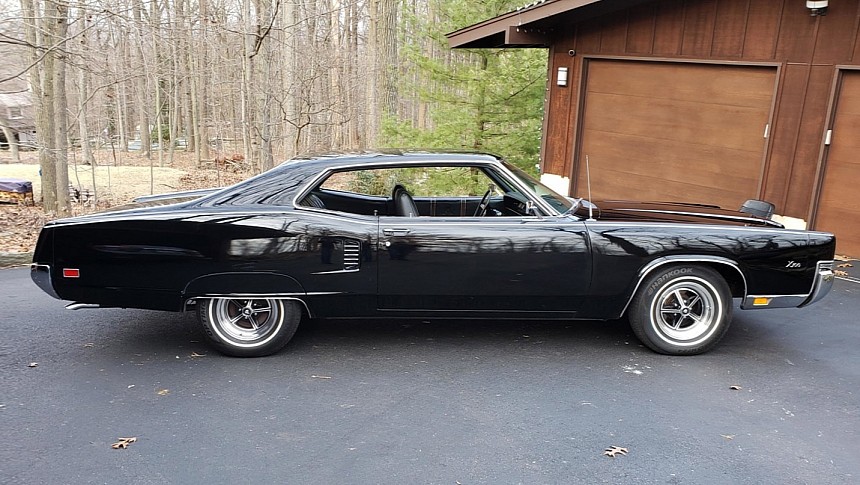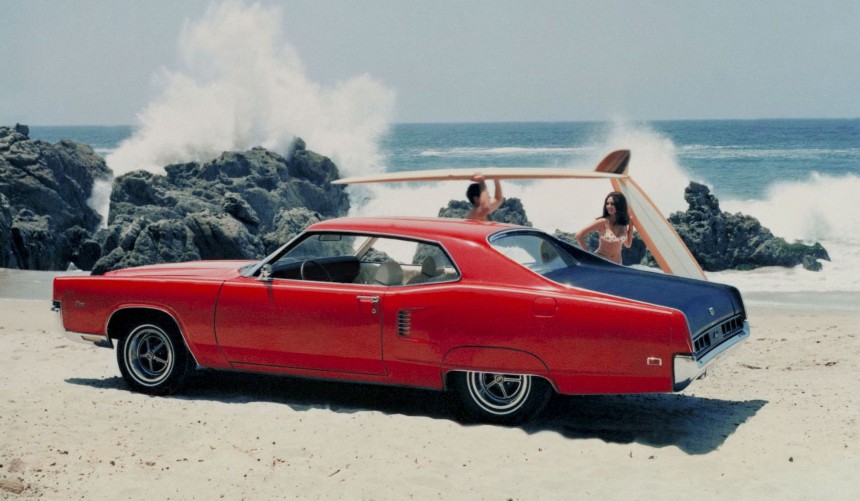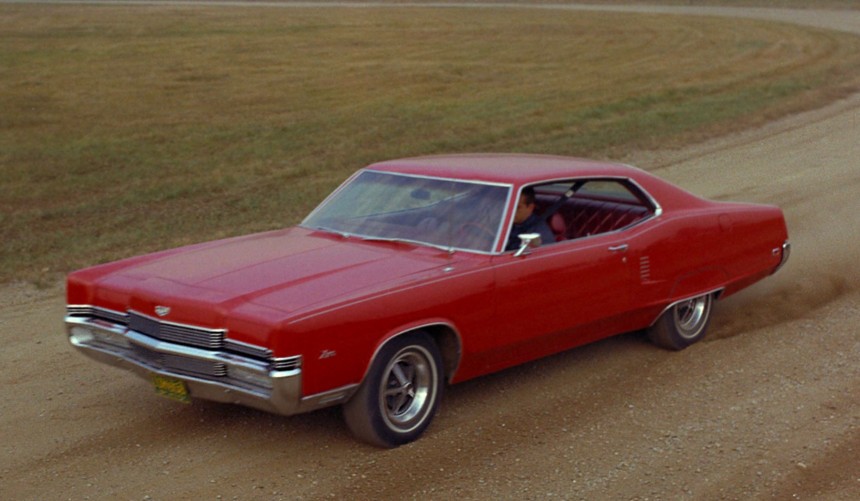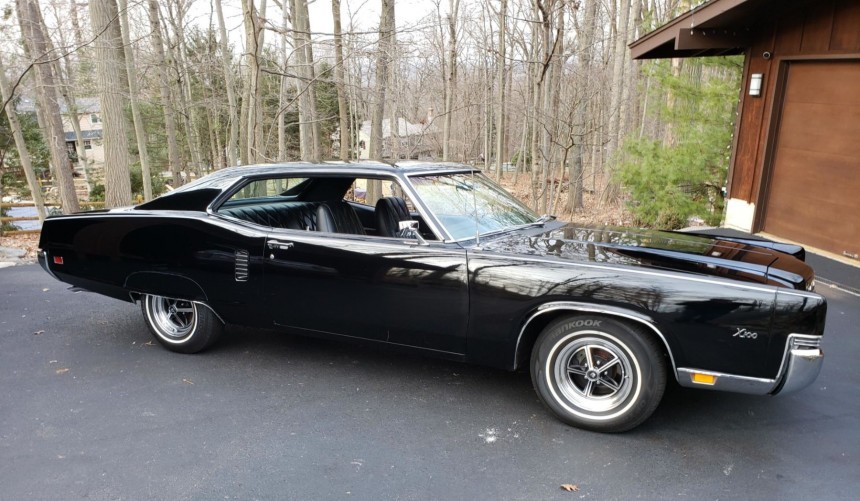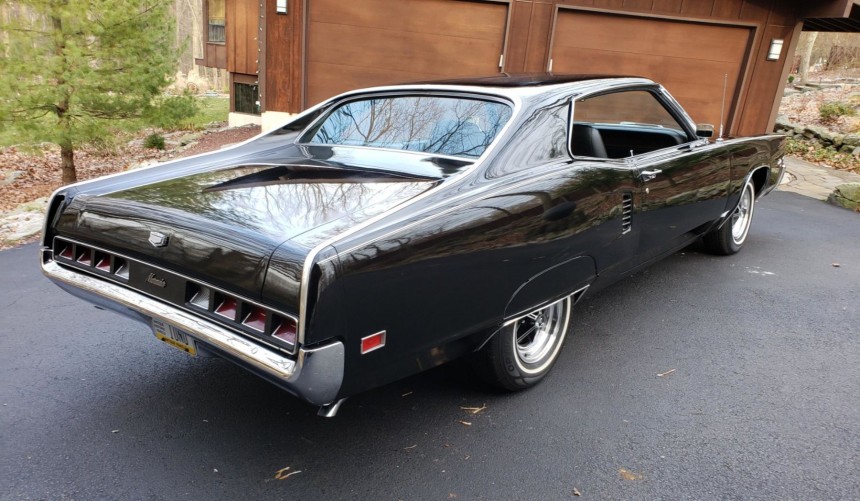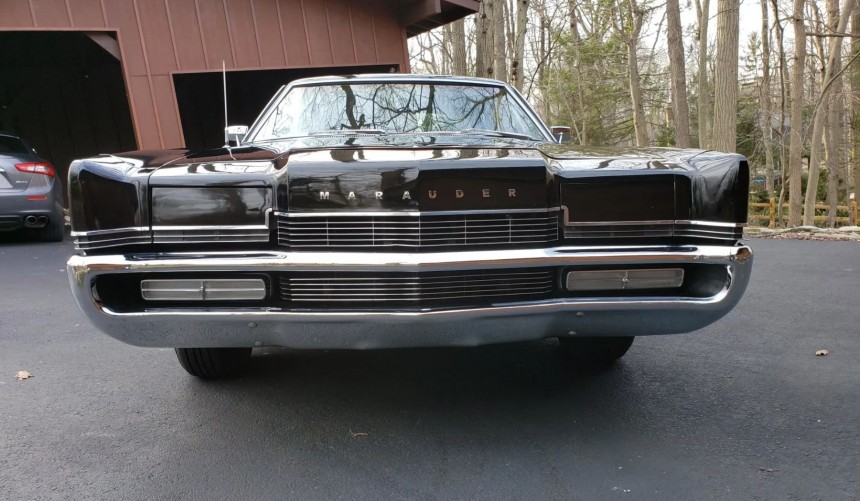If you ever dreamed of cruising in a battleship on wheels among the sea of boring SUVs, the '69-'70 Mercury Marauder X-100 is the car for you. Rare, imposing, and intimidating, it's also surprisingly affordable.
The second part of the 1960s was a period of excess throughout the American automotive industry.
Sporty-looking, big-block-powered intermediates were intoxicating the streets and drag strips with clouds of tire smoke, while pony cars and full-size land yachts were also joining the party.
Ford was at the forefront of this horsepower war, stuffing ever-larger and more powerful engines into all its available passenger cars, but its upscale Mercury brand was slow off the blocks.
That started to change in the second half of the 1968 model year when the intermediate Cyclone and Cougar pony car welcomed the 428 Cobra Jet on their respective options list.
But, while big blocks were present in Mercury's full-size lineup, a sporty-looking model was not, and that needed to change.
The change came in 1969 when Mercury revived the Marauder nameplate and assigned it to a new two-door hardtop that brought a sporty look by grafting a semi-fastback-style roofline called TunnelRoof to what was essentially a two-door version of the freshly redesigned Marquis.
Marketed as a full-size personal luxury car, the Marauder was chocked full of luxury features and could be had with one of two potent V8 engines.
Furthermore, in case just luxury wasn't enough, as the 1969 Marauder sales brochure stated in bold letters, Mercury introduced the X-100 package, which aimed to take the new model to another level of sportiness.
Though its wheelbase was three inches (76.2 mm) shorter than the Marquis and its body was five inches (127 mm) shorter overall, the Marauder X-100 was still an imposing presence that tipped the scales at 4,328 pounds (1,963 kg).
To make the heavy, 18-foot-long (5.5 m) land yacht truly sporty, Mercury equipped it with Ford's equally gargantuan 429-ci (7.0-liter) N-code V8.
The blue-painted powerplant with its four-barrel carb and 10.5:1 compression ratio was linked to a standard three-speed SelectShift automatic, which could be had with a central console-mounted U-shaped shifter.
It was rated at 360 hp and a massive 480 lb-ft (650 Nm) of torque, which, according to a test conducted by Car and Driver, was enough to propel the X-100 to 60 mph (97 kph) from a standstill in just 7.8 seconds.
Apart from the 429 engine, the $700 X-100 package added standard features like fender skirts, unique X-100 badges, a mate black rear deck lid, and five-spoke aluminum wheels wrapped with wide Goodyear Polyglas whitewall tires.
Inside, the X-100-equipped Marauder received a three-spoke steering wheel, vinyl upholstery, deep-loom nylon carpeting, and burled walnut inserts on the instrument panel and doors.
As standard, the model came with a front bench seat covered either in vinyl or leather, but customers could opt for either twin comfort seats or sportier buckets - options that added a center console.
To improve maneuverability, the X-100 could also be equipped with stiffer springs, a thicker anti-roll bar, power disc brakes for the front wheels, and a high-performance rear end.
Fully optioned out, a Marauder X-100 had a sticker price of close to $4,500 (about $37,600 in 2023 money). Compared to the Oldsmobile Toronado, one of its main rivals, it was around $300 cheaper (the Olds retailed at $4,836 in 1969 and $5,023 a year later).
Despite this, Mercury only sold 5,635 X-100 (and another 9,031 standard Marauders) in 1969, whereas Olds sold twice as many Toronados that year.
The standard Marauder and X-100 returned for the 1970 model year, but with no significant improvements, sales dropped by about 50 percent.
With sub-par sales figures, the division discontinued the Marauder after 1970, but the nameplate would be revived once again 33 years later.
Out of the 7,500 or so X-100 built in 1969 and 1970, very few have survived, and even fewer can be found in great shape.
Despite this, the average price for one of these well-kept examples doesn't exceed $14,000, according to classic.com.
Therefore, if you dream of owning a rare classic from the golden age of muscle cars, but only have a used Toyota Camry-level budget, the Marauder X-100 is the perfect choice.
Replacement parts (particularly bodywork-related) will be harder to source, you'll make frequent trips to the gas station, and considering its size, you'll struggle to find a parking spot.
But on the bright side, you'll have a reliable old-school powertrain that's cheap to fix when issues do occur.
Sure, it's not as glamorous as a 1970 Chevelle SS or even a Road Runner, but with its battleship-like appearance, comfy interior, and powerful V8, you'll be turning heads at every turn.
If you want to learn more about how it feels to own one of these underrated Mercs, we recommend watching the YouTube video below by Lou Costabile.
Sporty-looking, big-block-powered intermediates were intoxicating the streets and drag strips with clouds of tire smoke, while pony cars and full-size land yachts were also joining the party.
Ford was at the forefront of this horsepower war, stuffing ever-larger and more powerful engines into all its available passenger cars, but its upscale Mercury brand was slow off the blocks.
That started to change in the second half of the 1968 model year when the intermediate Cyclone and Cougar pony car welcomed the 428 Cobra Jet on their respective options list.
But, while big blocks were present in Mercury's full-size lineup, a sporty-looking model was not, and that needed to change.
In case just luxury isn't enough
Marketed as a full-size personal luxury car, the Marauder was chocked full of luxury features and could be had with one of two potent V8 engines.
Furthermore, in case just luxury wasn't enough, as the 1969 Marauder sales brochure stated in bold letters, Mercury introduced the X-100 package, which aimed to take the new model to another level of sportiness.
429 cubic inches for nearly 4,400 pounds
To make the heavy, 18-foot-long (5.5 m) land yacht truly sporty, Mercury equipped it with Ford's equally gargantuan 429-ci (7.0-liter) N-code V8.
The blue-painted powerplant with its four-barrel carb and 10.5:1 compression ratio was linked to a standard three-speed SelectShift automatic, which could be had with a central console-mounted U-shaped shifter.
It was rated at 360 hp and a massive 480 lb-ft (650 Nm) of torque, which, according to a test conducted by Car and Driver, was enough to propel the X-100 to 60 mph (97 kph) from a standstill in just 7.8 seconds.
Cosmetic upgrades and a healthy dose of optional hardware
Inside, the X-100-equipped Marauder received a three-spoke steering wheel, vinyl upholstery, deep-loom nylon carpeting, and burled walnut inserts on the instrument panel and doors.
As standard, the model came with a front bench seat covered either in vinyl or leather, but customers could opt for either twin comfort seats or sportier buckets - options that added a center console.
To improve maneuverability, the X-100 could also be equipped with stiffer springs, a thicker anti-roll bar, power disc brakes for the front wheels, and a high-performance rear end.
Not quite the marketing success that Mercury hoped for
Despite this, Mercury only sold 5,635 X-100 (and another 9,031 standard Marauders) in 1969, whereas Olds sold twice as many Toronados that year.
The standard Marauder and X-100 returned for the 1970 model year, but with no significant improvements, sales dropped by about 50 percent.
With sub-par sales figures, the division discontinued the Marauder after 1970, but the nameplate would be revived once again 33 years later.
Extremely rare, yet surprisingly affordable today
Despite this, the average price for one of these well-kept examples doesn't exceed $14,000, according to classic.com.
Therefore, if you dream of owning a rare classic from the golden age of muscle cars, but only have a used Toyota Camry-level budget, the Marauder X-100 is the perfect choice.
Replacement parts (particularly bodywork-related) will be harder to source, you'll make frequent trips to the gas station, and considering its size, you'll struggle to find a parking spot.
But on the bright side, you'll have a reliable old-school powertrain that's cheap to fix when issues do occur.
Sure, it's not as glamorous as a 1970 Chevelle SS or even a Road Runner, but with its battleship-like appearance, comfy interior, and powerful V8, you'll be turning heads at every turn.
If you want to learn more about how it feels to own one of these underrated Mercs, we recommend watching the YouTube video below by Lou Costabile.
